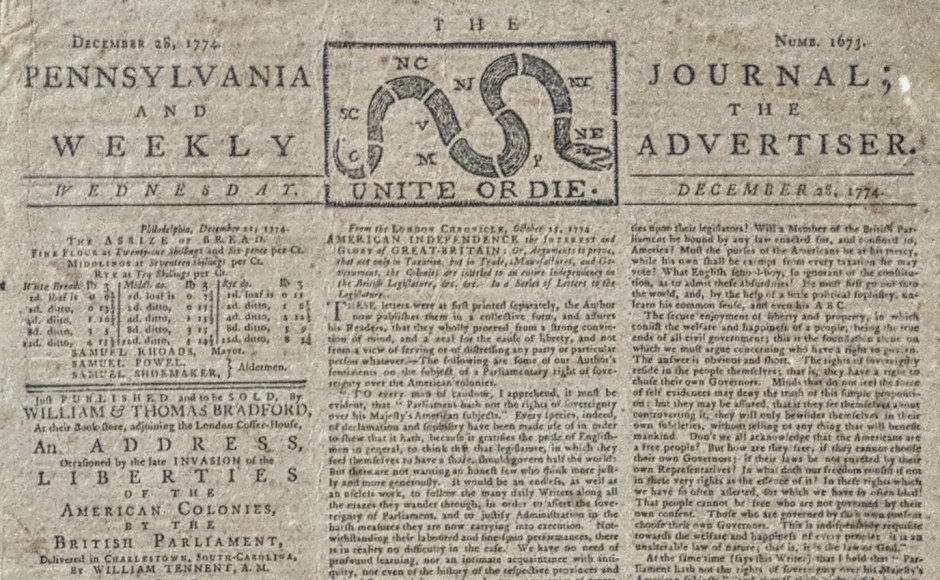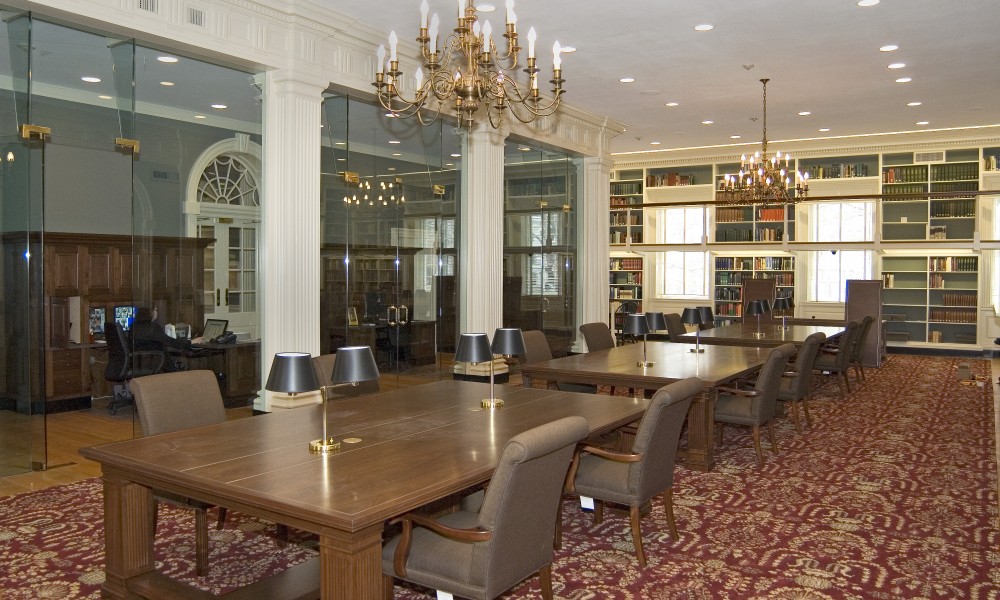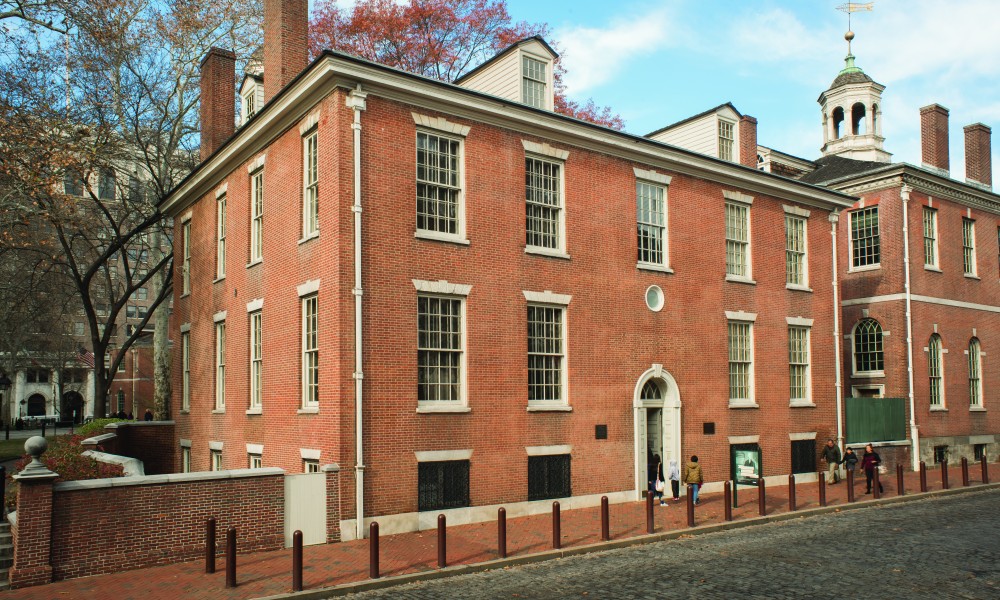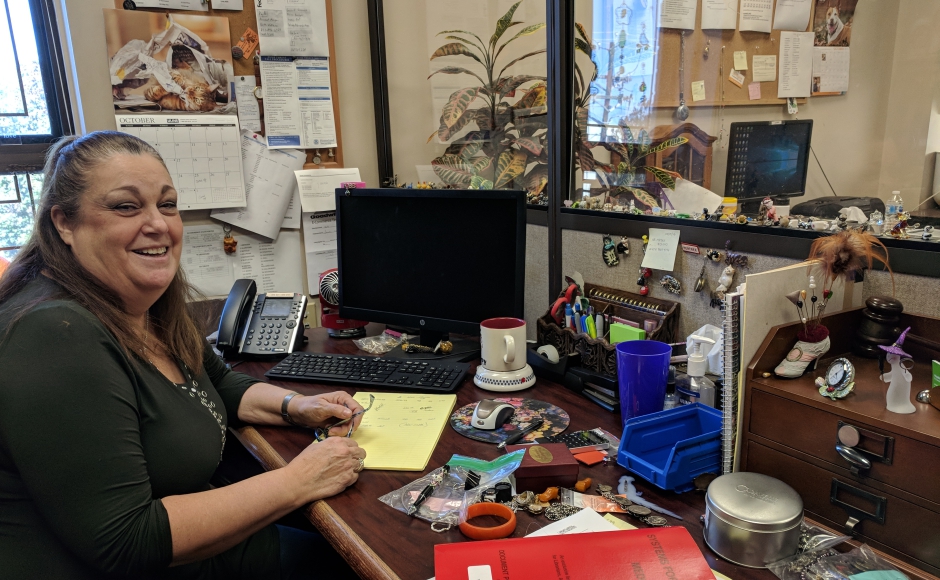A December 1774 copy of the Pennsylvania Journal and the Weekly Advertiser is headed to the American Philosophical Society next week.
By Matt Skoufalos | January 11, 2019

This December 1774 copy of The Pennsylvania Journal and Weekly Advertiser is believed to be one of just four known copies. Credit: Matt Skoufalos.
A 244-year-old Philadelphia newspaper that was donated to a South Jersey Goodwill last year is headed for a new, permanent home.
The December 28, 1774 edition of The Pennsylvania Journal and Weekly Advertiser, a historic artifact believed to be one of just a handful of remaining copies of that issue, has been acquired by the American Philosophical Society (APS).
Founded in 1743 by Benjamin Franklin for the purpose of “promoting useful knowledge,” APS is home to some 13 million pages of historic manuscripts, including Franklin’s papers, the journals of Lewis and Clark, and materials from 650 Native American communities.
The library, which is open to the public for research, plans to have the document restored by its conservation experts and digitized for electronic viewing, said APS librarian Patrick Spero.
“We have an almost complete run of this newspaper, [but] we don’t have this issue,” Spero said. “It adds to our existing collection, and fills a hole that we needed to fill.”
The issue features Franklin’s famous “Unite or Die” political cartoon in the nameplate, and was published just a few months before the first shots of the American Revolution were fired.

Library at the American Philosophical Society. Credit: The American Philosophical Society.
Spero said the editorial copy within it “reveals the process by which a group of separate colonies united to fight.”
“The iconic Franklin snake caught everyone’s attention, but for me the content was more interesting,” Spero said.
“You can get a sense of the separation that the colonies had felt historically and the sense of this coming together.
“It’s part of this moment, and it’s revealing,” he said. “If somebody were to know nothing about the [American] revolution and read it, they would get a sense of how the colonies were united.”
On January 18, APS will take possession of the newspaper from Goodwill in a ceremony at its celebration of Franklin’s birthday. Spero would not disclose how much the society paid for the newspaper, but said it has centuries-old endowment funds from which such purchases are made.
(Robert Snyder of the New York, New York-based Cohasco, Inc. had previously appraised the newspaper for Goodwill at $6,000 to $16,000.)
Spero did say, however, that the novelty of finding the newspaper in a Goodwill donation reignited his curiosity in where the next such document might be found.

Museum of the American Philosophical Society. Credit: The American Philosophical Society.
“One of the things as a historian that I always wonder about is what’s in people’s attics that could change the way we think about history,” he said.
“There’s a lot of stuff in people’s homes, and you always worry about things being thrown out that changes the way we think about the past.”
For Heather Randall, e-Commerce Manager for Goodwill of Southern New Jersey and Greater Philadelphia, seeing the newspaper transferred to a local museum is the best possible outcome for it.
“I wanted to see it stay local,” Randall said. “Since it was printed in Philadelphia, I thought it would be best if it could stay in Philadelphia, if at all possible.
“It’s going home,” she said.

Heather Randall, e-Commerce Manager for Goodwill of Southern New Jersey and Greater Philadelphia. Credit: Matt Skoufalos.
Randall said that her fellow staffers in the Goodwill e-Commerce division are equally excited to see it find a good home.
News of the rare artifact drew significant interest in their work, but “even with all the buzz, we never got any indication of where it came from beyond,” she said.
“That’s the weird part,” Randall said. “Nobody has come forward. We don’t have any more provenance than what it is.
“We get unusual pieces all the time,” she said, “but that was very unusual for us.”


